-
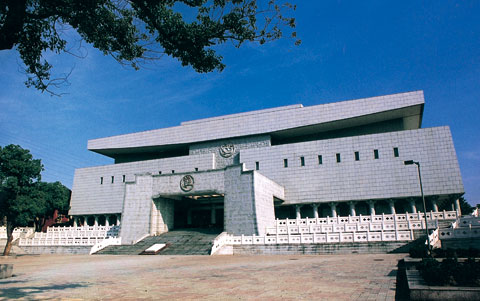
Hunan Provincial Museum, the largest museum of history and art in Hunan Province, was set up in the early 1950s. It lies in the Kaifu District of Changsha with an area of 51,000 square meters. The museum boasts abundant collections that feature cultural relics excavated from the marvelous Mawangdui Han Tombs, including the bronze wares of the Shang and Zhou Dynasties and the Kingdom of Chu, pottery and porcelain works in the past dynasties, calligraphy works and paintings, as well as modern cultural relics. The new exhibition building of Hunan Provincial Museum is simple in form but marked for its magnificent grandeur. The multi-functional and well equipped building shows six permanent exhibitions and many temporary exhibitions.The Exhibition of Han Tombs at MawangduiThe excavation from 1972 to 1974 of three tombs of the Western Han dynasty at Mawangdui in Changsha marks one of the major archaeological discoveries in the twentieth century. Over 3,000 cultural relics and a well-preserved female corpse were unearthed.Among the uncovered relics are bright-colored lacquer wares representing the highest level of workmanship at that time, fine silks amazingly showing accomplished weaving technique, silk paintings with romantic themes of the Kingdom of Heaven, the craving for eternity, and silk inscriptions demonstrating knowledge and wisdom of the ancient people. The well-preserved female corpse is even a miracle in human antisepsis.The Exhibition of Shang and Zhou Bronzes found in Hunan ProvinceThe earliest bronzes that have been found in Hunan Province were excavated from several Shang Dynasty sites (over 3,500 years ago) in Tonggushan of Yueyang City and Zaoshi of Shimen County. The Museum has a fairly large collection of bronzes of the Shang and Zhou Dynasties. The Exhibition of Shang and Zhou Bronzes found in Hunan Province displays 72 carefully selected bronzes and 11 jade objects unearthed together with the bronzes. This exhibition reflects the sequence of development of bronze culture in Hunan Province, and offers knowledge of the bronze Nao (a kind of musical instrument) and animal-shaped bronze utensils, and enriches the connotation of China\'s bronze culture.The Exhibition of Ceramics from Famous Kilns in Hunan ProvinceThe ceramics industry in Hunan Province has obtained a unique position after a long history of development. The ten-thousand-year old pottery shards unearthed at Yuchanyan in Dao County are among the earliest ever-discovered in China. More than 400 kilns chronologically ranging from the Eastern Han Dynasty (206BC -23AD) to the Qing Dynasty (1636-1912) have been discovered in Hunan Province. The brilliantly colorful ceramic art of Hunan has added a bright vista to ancient ceramics in China.The Exhibition of Calligraphies in the Ming and Qing DynastiesCalligraphy in China is an old and unique traditional art. Chinese calligraphy is based on Chinese written characters and gradually develops into a most concentrated aesthetic form of art that provides an understanding of the Chinese culture.There are a large collection of calligraphy works of the Ming and Qing Dynasties (1368-1912) in the museum, especially the works of celebrities from Hunan Province, which show the elegant and distinct demeanor of Hunan calligraphy. The displayed collection of the Ming and Qing Dynasties epitomizes the continuation, innovation and development of calligraphy in Hunan Province along with the other parts of China.The Exhibition of Paintings Created in the Ming and Qing DynastiesThe history of Chinese painting art runs a long course from a remote source with its unique national style and profound cultural information. Based on the development of the painting art in the Tang and the Song Dynasties (618AD-1279AD), the painting art of the Ming and the Qing Dynasties has a tendency of individuation, and, therefore, various schools of paintings with different styles have appeared. There is a large collection of paintings of the Ming and the Qing Dynasties in this exhibition. Among them, there are works of painters that have never been shown anywhere else in the country, which show the basic development of the painting art and the artistic style of Ming and Qing Dynasties.The Exhibition of Ten New Major Archaeological Discoveries in Hunan ProvinceThe Exhibition of Ten New Major Archaeological Discoveries in Hunan Province with 133 artifacts shows the ten new great archaeological discoveries in Hunan Province over the past ten years, among which, eight have been included in Annual Ten New Major Archaeological Discoveries in China and three have been included in the Hundred Greatest Archaeological Discoveries of the Twentieth Century in China. Furthermore, the excavation of an ancient city site from the Warring States (475BC-221BC) to the Qin(221BC-206BC)and Han (206BC-220AD) Dynasties in Liye of Longshan County has been regarded as one of the greatest archaeological discoveries of the twenty-first century in China. This exhibition shows rich and various aspects of artifacts, including quantity, variety, form, cultural meaning, historical and scientific value and so on.There are also many national treasures displayed here, which include Coffin with Painted Design on Black Lacquer Coating,which, though has been buried for more than two thousand years, still shines in dazzling colors; the Tang Dynasty Copy of \"Lan Ting Xu\" (the Brown Silk Paper Scroll), which enables us to know the style of early Tang Dynasty calligraphy while appreciating the artistic beauty of Wang Xizhi\'s calligraphy; the T-shaped Painting on Silk; the Gauze Gown as well as the Square Bronze Ding with Human Mask Design and Inscriptions of da he.With a concentration of treasures of cultural relics from the land of Hunan Province, Hunan Provincial Museum paints a panoramic historical picture of Hunan civilization. Serving as an important window to interpret the history and nuances of Hunan culture, it attracts every year hundreds of thousands of visitors from China and abroad.Admission: free (not open on Monday)Opening hours: 8:00am-17:45Tel: (86)731-4535566Transport: Bus Nos.112 and 136
HOT Changsha & Zhuzhou & Xiangtan
2022-08-06 11:53
View:5812
-
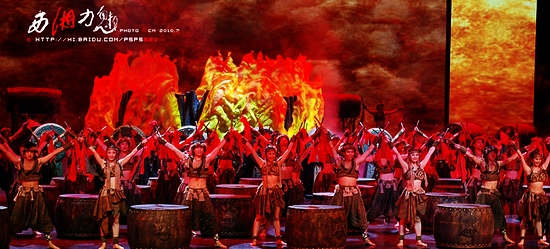
Zhangjiajie Folk Custom-Western charm Grand Theatre, is a long history of theater in the Zhangjiajie Scenic Area.It was founded in March 2001, after eight years of development, has gradually become a world famous brand of cultural tourism.It can accommodate 1080 people in the performing arts field, located in Zhangjiajie Zhangjiajie Scenic Area: World Natural Heritage and Geological Park, China\\\\\\\\\\\\\\\'s first national forest park.Show various forms of ethnic culture and folk customs of Zhangjiajie:Singing love songs and Wedding crying and The traditional Hand-waving Dance and Xiangxi ganshi and Zhangjiajie Hard Qigong and so on.Zhangjiajie Folk Custom-Western charm Grand Theatre, is a long history of theater in the Zhangjiajie Scenic Area.It was founded in March 2001, after eight years of development, has gradually become a world famous brand of cultural tourism.It can accommodate 1080 people in the performing arts field, located in Zhangjiajie Zhangjiajie Scenic Area: World Natural Heritage and Geological Park, China\\\\\\\\\\\\\\\'s first national forest park.Show various forms of ethnic culture and folk customs of Zhangjiajie:Singing love songs and Wedding crying and The traditional Hand-waving Dance and Xiangxi ganshi and Zhangjiajie Hard Qigong and so on.Zhangjiajie Folk Custom-Western charm Grand Theatre, is a long history of theater in the Zhangjiajie Scenic Area.It was founded in March 2001, after eight years of development, has gradually become a world famous brand of cultural tourism.It can accommodate 1080 people in the performing arts field, located in Zhangjiajie Zhangjiajie Scenic Area: World Natural Heritage and Geological Park, China\\\\\\\\\\\\\\\'s first national forest park.Show various forms of ethnic culture and folk customs of Zhangjiajie:Singing love songs and Wedding crying and The traditional Hand-waving Dance and Xiangxi ganshi and Zhangjiajie Hard Qigong and so on.Zhangjiajie Folk Custom-Western charm Grand Theatre, is a long history of theater in the Zhangjiajie Scenic Area.It was founded in March 2001, after eight years of development, has gradually become a world famous brand of cultural tourism.It can accommodate 1080 people in the performing arts field, located in Zhangjiajie Zhangjiajie Scenic Area: World Natural Heritage and Geological Park, China\\\\\\\\\\\\\\\'s first national forest park.Show various forms of ethnic culture and folk customs of Zhangjiajie:Singing love songs and Wedding crying and The traditional Hand-waving Dance and Xiangxi ganshi and Zhangjiajie Hard Qigong and so on.Zhangjiajie Folk Custom-Western charm Grand Theatre, is a long history of theater in the Zhangjiajie Scenic Area.It was founded in March 2001, after eight years of development, has gradually become a world famous brand of cultural tourism.It can accommodate 1080 people in the performing arts field, located in Zhangjiajie Zhangjiajie Scenic Area: World Natural Heritage and Geological Park, China\\\\\\\\\\\\\\\'s first national forest park.Show various forms of ethnic culture and folk customs of Zhangjiajie:Singing love songs and Wedding crying and The traditional Hand-waving Dance and Xiangxi ganshi and Zhangjiajie Hard Qigong and so on.Zhangjiajie Folk Custom-Western charm Grand Theatre, is a long history of theater in the Zhangjiajie Scenic Area.It was founded in March 2001, after eight years of development, has gradually become a world famous brand of cultural tourism.It can accommodate 1080 people in the performing arts field, located in Zhangjiajie Zhangjiajie Scenic Area: World Natural Heritage and Geological Park, China\\\\\\\\\\\\\\\'s first national forest park.Show various forms of ethnic culture and folk customs of Zhangjiajie:Singing love songs and Wedding crying and The traditional Hand-waving Dance and Xiangxi ganshi and Zhangjiajie Hard Qigong and so on.Zhangjiajie Folk Custom-Western charm Grand Theatre, is a long history of theater in the Zhangjiajie Scenic Area.It was founded in March 2001, after eight years of development, has gradually become a world famous brand of cultural tourism.It can accommodate 1080 people in the performing arts field, located in Zhangjiajie Zhangjiajie Scenic Area: World Natural Heritage and Geological Park, China\\\\\\\\\\\\\\\'s first national forest park.Show various forms of ethnic culture and folk customs of Zhangjiajie:Singing love songs and Wedding crying and The traditional Hand-waving Dance and Xiangxi ganshi and Zhangjiajie Hard Qigong and so on.Zhangjiajie Folk Custom-Western charm Grand Theatre, is a long history of theater in the Zhangjiajie Scenic Area.It was founded in March 2001, after eight years of development, has gradually become a world famous brand of cultural tourism.It can accommodate 1080 people in the performing arts field, located in Zhangjiajie Zhangjiajie Scenic Area: World Natural Heritage and Geological Park, China\\\\\\\\\\\\\\\'s first national forest park.Show various forms of ethnic culture and folk customs of Zhangjiajie:Singing love songs and Wedding crying and The traditional Hand-waving Dance and Xiangxi ganshi and Zhangjiajie Hard Qigong and so on.Zhangjiajie Folk Custom-Western charm Grand Theatre, is a long history of theater in the Zhangjiajie Scenic Area.It was founded in March 2001, after eight years of development, has gradually become a world famous brand of cultural tourism.It can accommodate 1080 people in the performing arts field, located in Zhangjiajie Zhangjiajie Scenic Area: World Natural Heritage and Geological Park, China\\\\\\\\\\\\\\\'s first national forest park.Show various forms of ethnic culture and folk customs of Zhangjiajie:Singing love songs and Wedding crying and The traditional Hand-waving Dance and Xiangxi ganshi and Zhangjiajie Hard Qigong and so on.Zhangjiajie Folk Custom-Western charm Grand Theatre, is a long history of theater in the Zhangjiajie Scenic Area.It was founded in March 2001, after eight years of development, has gradually become a world famous brand of cultural tourism.It can accommodate 1080 people in the performing arts field, located in Zhangjiajie Zhangjiajie Scenic Area: World Natural Heritage and Geological Park, China\\\\\\\\\\\\\\\'s first national forest park.Show various forms of ethnic culture and folk customs of Zhangjiajie:Singing love songs and Wedding crying and The traditional Hand-waving Dance and Xiangxi ganshi and Zhangjiajie Hard Qigong and so on.Zhangjiajie Folk Custom-Western charm Grand Theatre, is a long history of theater in the Zhangjiajie Scenic Area.It was founded in March 2001, after eight years of development, has gradually become a world famous brand of cultural tourism.It can accommodate 1080 people in the performing arts field, located in Zhangjiajie Zhangjiajie Scenic Area: World Natural Heritage and Geological Park, China\\\\\\\\\\\\\\\'s first national forest park.Show various forms of ethnic culture and folk customs of Zhangjiajie:Singing love songs and Wedding crying and The traditional Hand-waving Dance and Xiangxi ganshi and Zhangjiajie Hard Qigong and so on.
HOT Performance
2022-07-29 09:51
View:24784
-
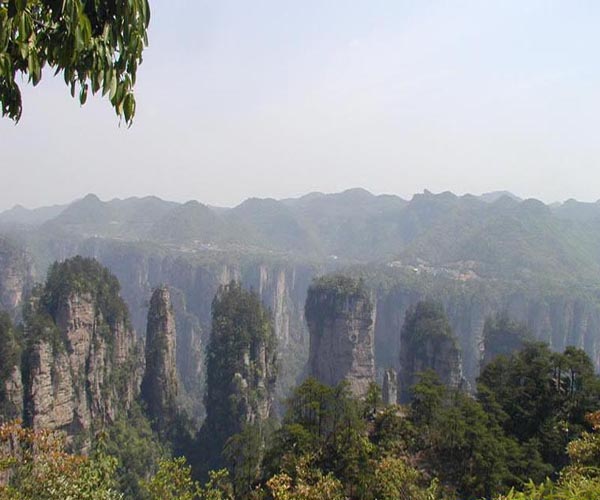
You cant claim to have come to Zhangjiajie if you dont visit Huangshizhai, (yellow stone stronghold in English) Covering an area of about 250 mu (about 16.7 hectares) at its top, Huangshi Village is approximately 800 meters above the ground, and 1100 meters above sea level averagely. The village is characterized by the overhanging clif
HOT Wulingyuan District
2022-07-14 10:17
View:22491
-
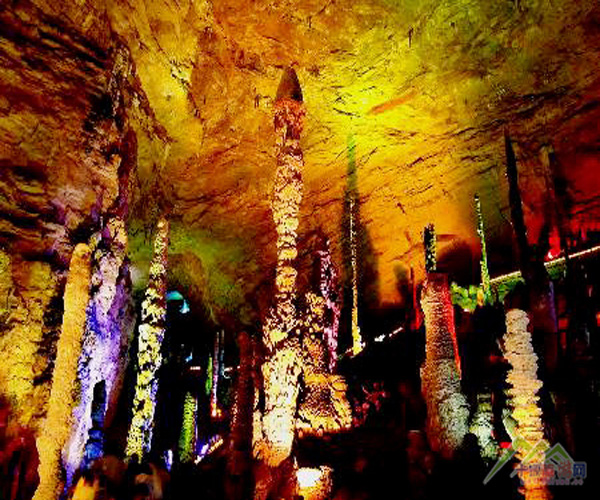
Yellow Dragon Cave is more beautiful than the outside world. Day or night, without fear of rain or wind, all year long, you can delight in its wonderful scenery.The cave is of good beneficial air circulation, and is cool in the summer and war in the winter. Yellow Dragon Cave is one of the foremost scenic areas in Zhangjiajie, and was
HOT Wulingyuan District
2022-07-09 09:00
View:33890
-
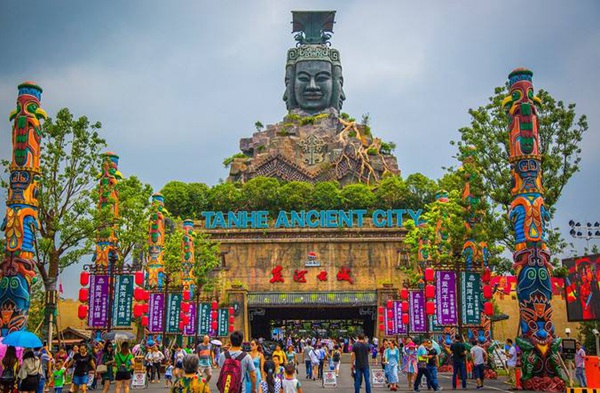
《Zhangjiajie Eternal love》 is the chief director of "China's first director of tourism performances", Mr. Huang Qiaoling, and will be unveiled on June 28, 2019 in Wulingyuan District, Zhangjiajie.
HOT Performance
2022-06-15 23:22
View:4685
-
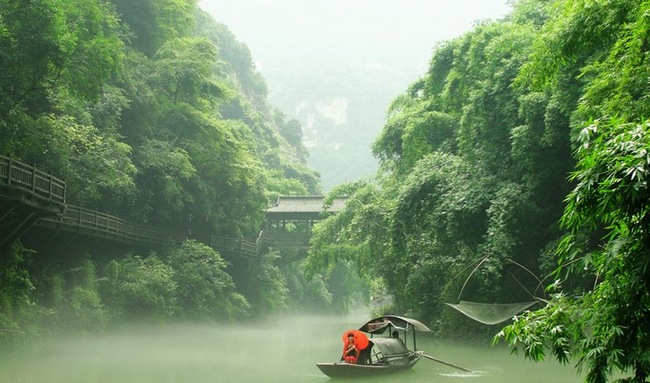
Zhangjiajie Grand Canyon is located in Sanguan Township of Cili County in Zhangjiajie City and is close to the world natural heritage and the world geological park– Wulingyuan scenic area of Zhangjiajie. It is a new development and construction of scenic spots. Zhangjiajie Grand Canyon combining mountain, water and hole, is the landform m
HOT Cili County
2022-06-11 10:51
View:38931
-
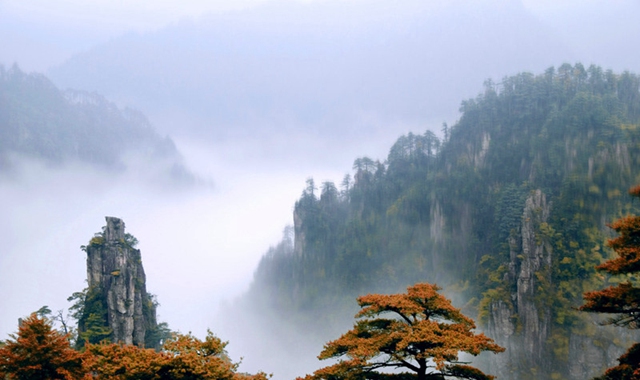
Chenzhou, Mount Mangshan National Park, located in Yizhang County, Chenzhou, has the most intact subtropical primeval second growth forest and evergreen broad-leave forest in the world. It covers 6,000 hectares, and contains both the northern and the southern plants. It has more than 300 varieties of animals. The yellow-breasted pheasant, sika deer, golden cat, and python are first-class state protected species.Mount Mangshan National Park is a complete forest museum with abundant rainfall and rich natural resources.The Yao live nearby. Their home feature exquisite roofs and poling, finished wood windows, and picture plaques framing the main gates. Taken together these demonstrate unique primitive simplicity and elegance.The King Pan Festival originated from the Singing Party that falls on October 16 of the lunar calendar (Usually the end of November on the Gregorian calendar), which is a grand Yao singing and dancing festival to worship their ancestors and celebrate the bumper harvest. Nowadays, the King Pan Festival has developed into an entertaining festival to celebrate the harvest, and is also an opportunity for young boys and girls to look for the one they might fall in love with.Opening time: 8:00-18:00 Tel: (86)735-3999005 Location:South Yizhang County, Chenzhou City, Hunan ProvinceTicket: RMB 80 yuan and 3 yuan (insurance), and 40 yuan park transit fare.Transport:1. Take public bus No. 32 or 18 to Tianlong Station in Chenzhou City. Transfer to the shuttle bus to the destination.2. It is 30km from Nation Road 107 in the west, 69 km from Jingguang Double Line, 64 km from Jingzhu High Way. Take National Road 107, go past Yizhang, Pingshi, Yiliu, and then turn off the National Road 107 at the 2032.3 km Crossway to Mangshan National Forest Park road.3. Take a nonstop bus from Chenzhou South Station at 9:30, 12:30 or 14:30.4. Take a bus from Tianlong Station in Chenzhou City to Yizhang County, and then take a nonstop bus at 7:30, 8:00, 11:00, 12:50 or 13:00.
HOT Hunan & Other regions
2022-05-28 16:19
View:6840
-
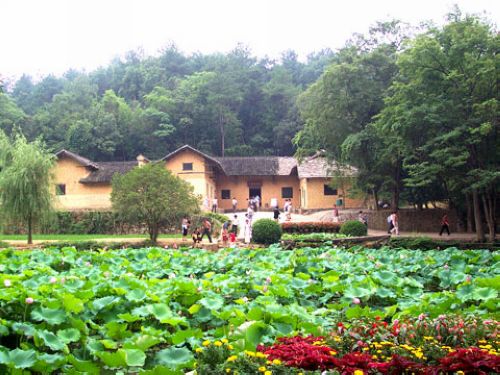
Shaoshan, one of the four major revolutionary memorial lands of China, has been well known in the world because of Mao Zedong, a great leader of China. With fascinating scenery, Shaoshan Scenic and Historic Interest Area is mainly composed of Former Residence of Mao Zedong, Shaofeng Peak, Dishui Cave, Qingxi and Heishizhai scenic areas.Former Residence of Mao ZedongThe Former Residence of Mao Zedong is one of the national AAAA scenic spots. The residence named Shangwuchang, is located in a valley which is well landscaped. The house that faces the south was built with adobe and grey tile- roofed. It is of a half-timbered structure, and used to be a normal farmer house in the south of China. In the front there are rice fields and pools, in the back there is a hill with diverse trees, on the left there is a vegetable field and on the right there are vegetable fields, rice fields and grain-sunning ground. It covers a land area of 566.39 square meters, with 20 rooms. The east part of the residence with 14 rooms belonged to Mao\\\'s family, whilst the west part with 5 rooms belonged to his neighbors, and the living room was shared by the two families. Mao Zedong was born here on Dec. 26, 1893. He spent his childhood and boyhood here. In the fall of 1910 he left this village for study. After he joined the revolution, Mao Zedong returned ShaoShan for 5 times, for the purpose of revolution, inspecting or visiting his villagers. In 1966 he came here for the last time and spent the time in Dishui Cave (Dripping Water Cave). This residence was destructed in 1929 by Kuomintang, after 1950 its original appearance was recovered. In April, 1961, this former residence was announced by the State Council as a Key National Historical Reservation Unit, and then in 1982 its name was changed to Former Residence from Original Residence. Now all the rooms have been renovated to be their original appearance and layouts: their bedrooms (Mao, his parents and his two brothers\\\'), the living room, kitchen and other rooms. The historical relics include: the furniture in Mao\\\'s bedroom and his parents\\\' bedroom (bed, wardrobe, desks, stool and chair), the jar and cupboard in the kitchen, stone grinder, man-driven irrigation tool and the harrow in the Farm Implements Room, the rice pestle and man-driven blower for rice in the Pestle Room.
HOT Changsha & Zhuzhou & Xiangtan
2022-05-24 17:17
View:5344












